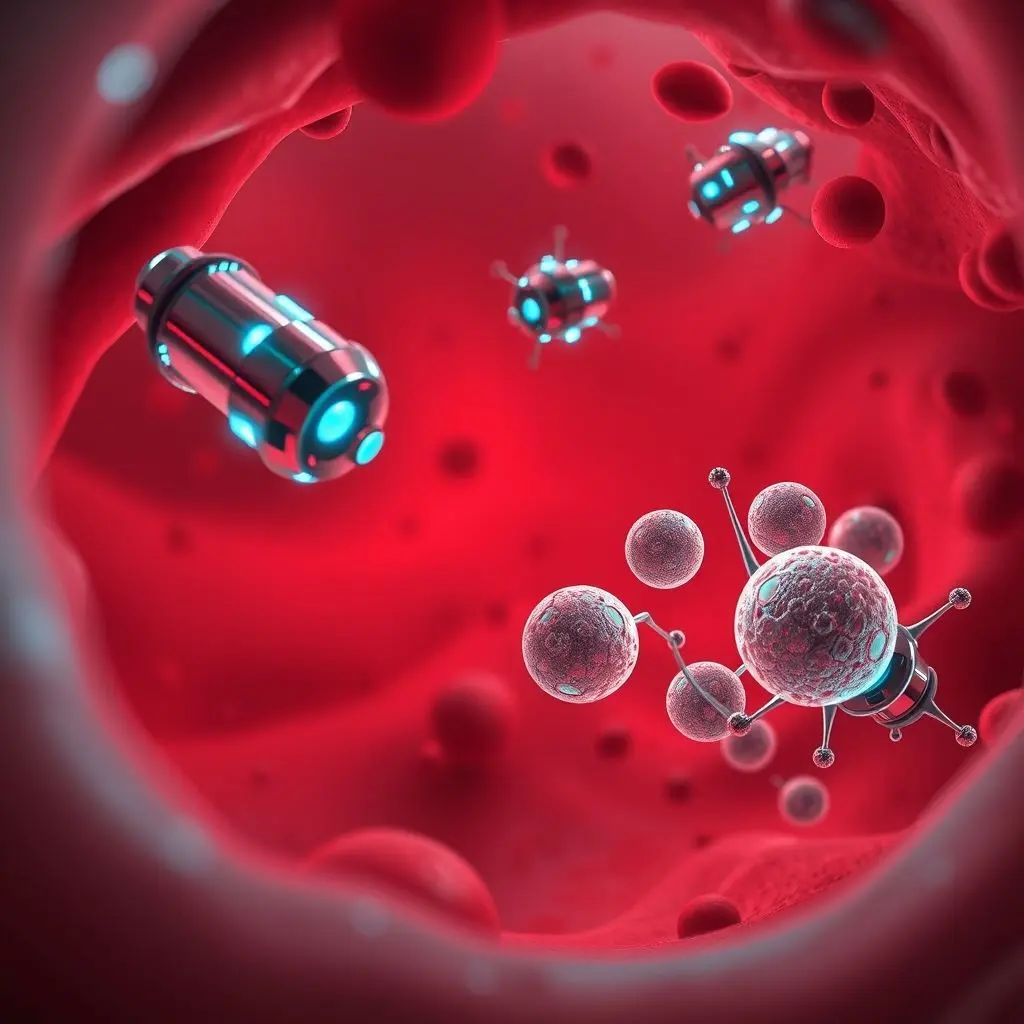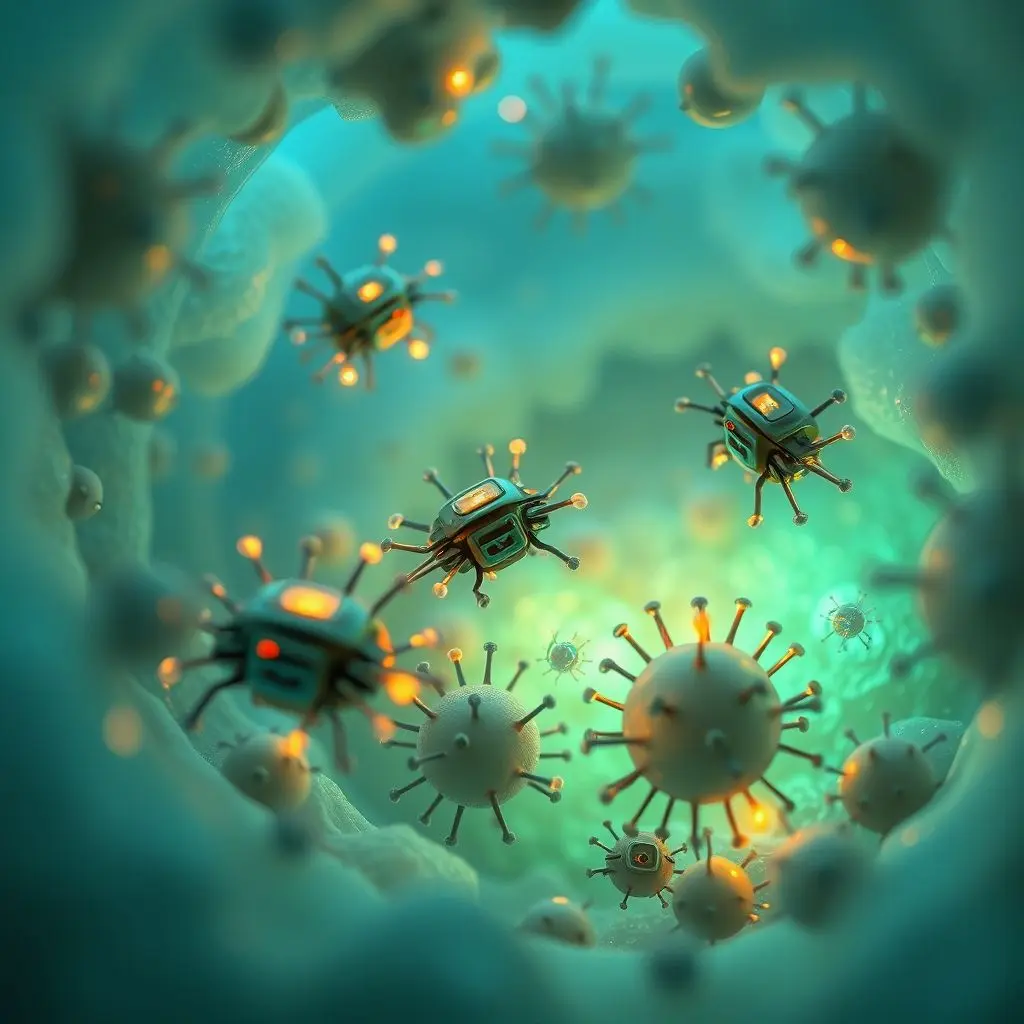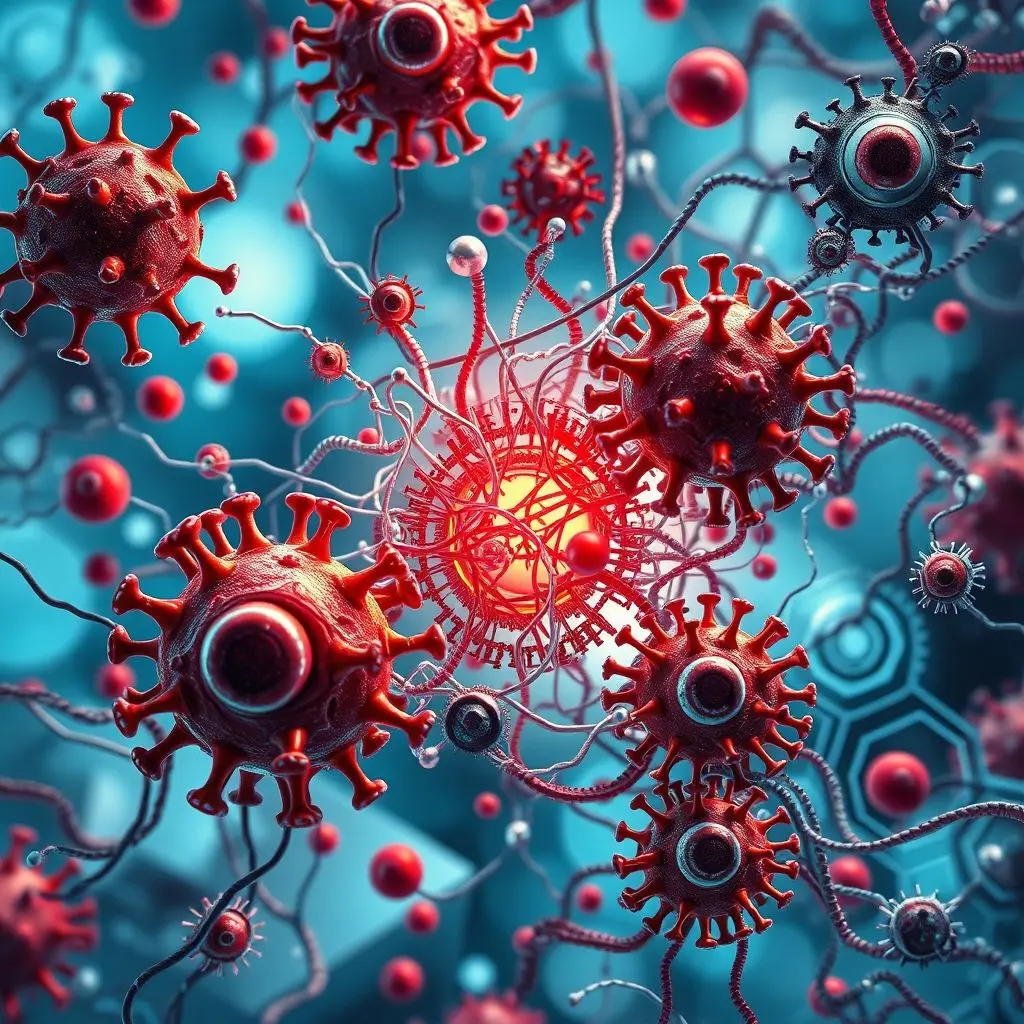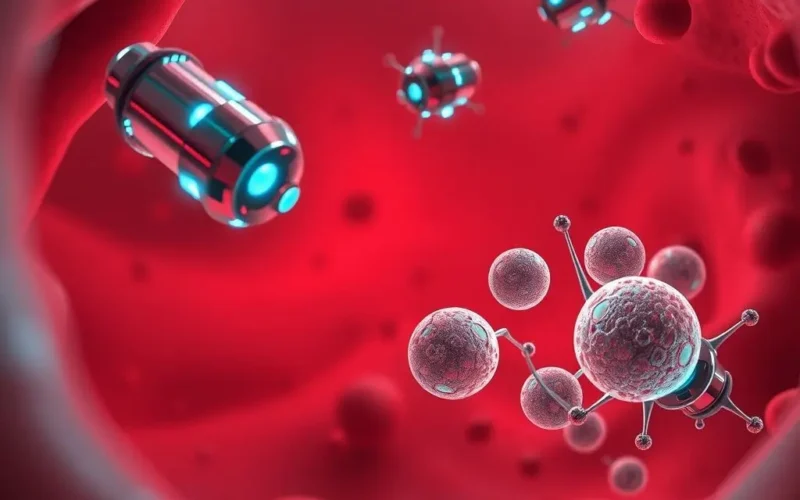What if the future of healthcare involved doctors smaller than a single cell, navigating your body’s intricate network to fix problems at their source? Imagine microscopic machines, aptly named nanobots, embarking on surgical missions from within, repairing damaged tissues, delivering powerful medicines precisely where needed, or even hunting down rogue cells like cancer. It sounds like something ripped from the pages of a science fiction novel, doesn’t it?
Yet, this seemingly futuristic vision of internal repair is steadily moving from the realm of imagination into the domain of serious scientific inquiry and development. Researchers worldwide are dedicating their efforts to designing and testing these incredible, tiny technologies that could fundamentally change how we approach healing and wellness.
Before we delve deeper into this revolutionary concept, take a moment to visualize this incredible potential. Check out this quick look at the tiny healers of tomorrow:
Fascinating, right? Let’s explore the exciting possibilities and the significant hurdles on the path to making medical nanobots a reality.
Table of Contents
What Exactly Are Medical Nanobots?
At its core, a nanobot is a machine or robot with components near the scale of a nanometer (one billionth of a meter). To put that into perspective, a human hair is about 80,000 to 100,000 nanometers wide. A typical bacterium is a few thousand nanometers long, and even a virus is hundreds of nanometers. So, we are talking about devices operating at the molecular or cellular level.
In the medical context, nanobots aren’t necessarily tiny metallic humanoids with tools. Often, the term refers to complex molecular machines, nanoscale devices, or even modified biological entities (like bacteria or viruses used as carriers) designed to perform specific tasks within the body. These tasks can range from sensing environmental changes to performing physical manipulation at the cellular level.
The concept was famously popularized by Eric Drexler in his 1986 book Engines of Creation, envisioning ‘assemblers’ that could build structures atom by atom. While Drexler’s original vision is still highly theoretical and debated, modern research focuses on more practical nanoscale devices for medical applications.
How Could Tiny Tech Revolutionize Healing?
The potential applications for medical nanobots are vast and incredibly promising. Their ability to operate at the cellular and molecular scale opens doors to treatments currently deemed impossible or highly invasive.
Precision Drug Delivery
One of the most frequently cited applications is targeted drug delivery. Imagine chemotherapy drugs being delivered directly to cancerous cells, sparing healthy tissues. This could dramatically reduce the debilitating side effects of current treatments. Nanobots could theoretically navigate to a specific tumor site, release their payload only when in contact with or proximity to target cells (perhaps by sensing specific biomarkers), ensuring high drug concentration where needed and minimal exposure elsewhere.

Cellular Repair and Regeneration
This is perhaps the most ambitious application. Theoretically, nanobots could be programmed to identify and repair damaged cells. This could involve fixing DNA errors, assisting protein synthesis, clearing arterial plaque, or even aiding in the repair of damaged tissues and organs at a fundamental level. While highly speculative today, the idea of repairing cellular machinery from within is a powerful driver for research.
Disease Diagnosis and Monitoring
Nanobots equipped with nanoscale sensors could patrol the bloodstream, lymph system, or specific organs, detecting early signs of disease long before symptoms appear. They could monitor levels of biomarkers, identify the presence of pathogens, or assess the health of tissues in real-time, transmitting data wirelessly to external devices. This could enable incredibly early detection and personalized health monitoring.
Fighting Infections and Pathogens
Picture nanobots designed to identify and neutralize bacteria, viruses, or other pathogens directly within the body. Instead of relying solely on systemic antibiotics that affect the entire body, nanobots could potentially target infection sites with extreme precision, potentially even overcoming antibiotic resistance mechanisms.

Assisting in Surgery
Minimally invasive surgery could reach new levels with nanoscale assistance. Tiny robotic tools could be guided inside the body to perform delicate tasks, access hard-to-reach areas, or assist surgeons with enhanced precision, reducing the need for large incisions and potentially speeding up recovery.
The Science Behind the Tiny Tech
Building machines at the nanoscale presents immense engineering challenges. Researchers are exploring various approaches:
- DNA Origami: Using DNA as a programmable building material to create complex 3D nanoscale structures that can fold, unfold, and carry cargo.
- Molecular Machines: Designing synthetic molecules that can perform mechanical tasks when triggered by light, chemical signals, or electrical fields.
- Nanoscale Robotics: Building tiny devices from materials like silicon, metals, or polymers, potentially with miniature propellers or other propulsion systems.
- Hybrid Systems: Combining biological components (like modified bacteria or cells) with synthetic parts to create ‘bio-hybrid’ micro-robots.
Powering, navigating, and controlling these devices once inside the body are critical research areas. Potential methods include using external magnetic fields, ultrasound waves, chemical gradients within the body, or programming the nanobots to respond autonomously to specific internal conditions.

Significant Hurdles on the Nano-Road
While the potential is revolutionary, it’s crucial to acknowledge that significant challenges must be overcome before medical nanobots become a clinical reality:
- Manufacturing Complexity: Producing billions or trillions of identical, reliable, and functional nanobots cost-effectively is a monumental engineering hurdle.
- Delivery and Navigation: Getting the nanobots into the correct location within the body, having them perform their task, and ensuring they can navigate complex biological environments is extremely difficult.
- Biocompatibility and Immune Response: Will the body recognize these tiny machines as foreign invaders and attack them? Ensuring the materials used are non-toxic and don’t provoke a harmful immune response is paramount.
- Powering and Control: How will these tiny devices be powered inside the body? How will their actions be precisely controlled externally or programmed autonomously without unintended consequences?
- Safety and Efficacy: Rigorous testing is required to prove they are safe for human use and actually perform their intended function effectively without causing damage.
- Regulation and Ethics: Developing regulatory frameworks for such novel technology and addressing ethical concerns about privacy, control, and potential misuse are necessary steps.
These are not trivial problems, and solving them requires breakthroughs across multiple scientific and engineering disciplines.

Current State of Research and Development
Today, the field is primarily in the research and preclinical stages. Scientists are conducting experiments *in vitro* (in lab dishes) and *in vivo* (in animal models) to test different designs, propulsion methods, and targeted delivery mechanisms.
Some related technologies, like nanoparticle-based drug carriers, are already in limited clinical use, demonstrating the potential of nanoscale systems for targeted delivery. However, autonomous, complex ‘nanobots’ capable of sophisticated repair or diagnostic tasks are still largely confined to laboratories and theoretical models. Progress is steady, but widespread clinical application is still years, perhaps decades, away.
Frequently Asked Questions About Medical Nanobots
Are medical nanobots real today?
The concept is real and actively researched, but complex, autonomous medical nanobots for routine clinical use are not yet available. Simpler nanoscale systems like targeted drug-delivery nanoparticles are being used or are in clinical trials.
How small are nanobots?
They operate at the nanoscale, typically measured in nanometers (billionths of a meter). This means they are much smaller than human cells.
How would they get inside the body?
Potential delivery methods include injection into the bloodstream, ingestion, or perhaps direct implantation for localized treatment.
How would doctors control them?
Research explores methods like using external magnetic fields, ultrasound, programming them to respond to internal chemical signals (like tumor markers), or pre-programming their tasks.
What diseases could nanobots potentially treat?
The potential applications include treating cancer (targeted delivery), clearing arterial blockages, fighting infections, repairing tissue damage, treating genetic disorders, and improving diagnostics.
Is it safe to put tiny machines inside the body?
Safety is a major focus of research. Ensuring the materials are biocompatible, non-toxic, and that the body doesn’t reject them is a critical challenge that must be solved before clinical use.
Looking Ahead
The journey towards practical medical nanobots is a long and complex one, fraught with scientific and engineering challenges that push the boundaries of what is currently possible. Yet, the potential rewards – treatments that are less invasive, more precise, and capable of addressing diseases at their most fundamental level – are immense.
The research happening today, from DNA-based nanostructures to bio-hybrid micro-swimmers, is laying the groundwork for a future where tiny technology could play a pivotal role in maintaining our health and fighting disease. While we may not see fleets of microscopic surgeons inside us tomorrow, the vision of healing powered by a nano-team continues to inspire groundbreaking innovation in medicine.





